During HDCC many titans of the comic book world were present in Jaarbeurs Utrecht. As well as Kelly Sue DeConnick, Phil Jimenez, Gene Ha, Nicola Scott and Elsa Charretier, writer/artist Jimmy Palmiotti and his wife Amanda Conner were present. Read the Jimmy Palmiotti interview!
Jimmy Palmiotti is an award winning comic book creator. He is the co-founder of Event Comics, Black Bull Media and PaperFilms. For Marvel, Jimmy and Joe Quesada created the Marvel Knights line, where superheroes such as Daredevil, The Punisher, Black Panther and The Inhumans were presented in new and interesting ways. Jimmy works on many series and characters, such as The Big Con Job, The Monolith, The Pro, Ash, Sex and Violence and Painkiller Jane. That last one – Painkiller Jane – is also a Syfy original tv series starring Kristanna Loken.
Together with his partner Amanda Conner, Jimmy is working on Harley Quinn for DC Comics. With Justin Gray, he has co-written Jonah Hex, All-Star Western, Power Girl and the digital Ame-Comi Girls. Jimmy has also worked on video games such as Injustice: Gods Among Us and DCU vs. Mortal Kombat. Several creations are currently in film development: Just A Pilgrim, The New West, Random Acts of Violence, Monolith, Back To Brooklyn, Tempest and Painkiller Jane. So when I heard Jimmy and Amanda would be present at Dutch Comic Con 2023 Winter Edition, I jumped at the chance to get my Marvel Knights Daredevil #1 and The Pro signed and talk to this hero of comic books. Read on to find out what keeps this creative writer and artist busy at the moment:
- I learned about your work when I was just getting into American comics and found the Marvel Knights I was reading Daredevil which you did with Joe Queasada and I got to know the team of Joe and Jimmy.
Yes, we did a lot of work together.
- How did that come to pass?
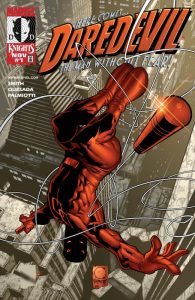
I met Joe at San Diego Comic Con. A mutual friend introduced us and we got along great. At the time I was designing covers for Marvel. I was doing layouts and then gave it to artists to do the covers. And I got Joe some work doing that. The next thing we worked on together was X-O Manowar #0 for Valiant. That did very well and we started publishing our own comics like Painkiller Jane and Ash as Event Comics.
And while we were doing Event Comics, Marvel was in Chapter Eleven, which is bankruptcy. They decided to get these two guys to do something for them. What we did, we got four titles and Joe and I decided we wanted to do Daredevil. Filmmaker Kevin Smith owed us some favours – we were in one of his movies (Chasing Amy (1997)) – so we got him to write the series. We hired our friends to do the other books: Berni Wrightson (The Punisher), Mark Texeira (Black Panther), Paul Jenkins (The Inhumans), Garth Ennis and Steve Dillon (The Punisher). Joe and me, we hired all our friends to work with us.
We made sure the right creators were paired with the right books, but Joe and I worked together all the way up to Marvel Knights. We were very successful and then Marvel was bought by Disney. They were not in Chapter 11 anymore and I decided I wanted to do more writing. So, I left to do more writing and Joe stayed. But we’re still friends, we still talk once a month. So, it’s been a very long creative friendship. But now I have a new partner, Amanda Conner, and that’s a good relationship too. I do like working with other people.
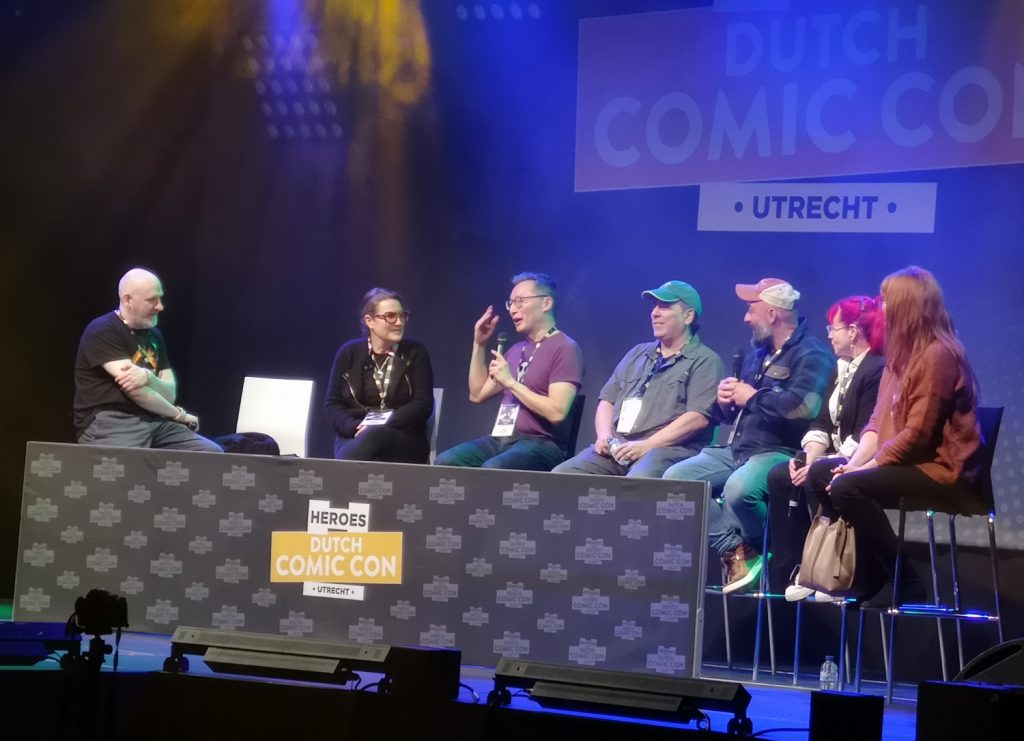
- I was just talking to one of the writers of the MCU: The Reign of Marvel Studios book and I told him that Marvel is at their best when they are almost bankrupt. When they do not have any money and are in trouble. Then, from the ashes, something new comes up, like a Phoenix. Then there’s this freedom of creativity. Now they’ve been bought by Disney and Avengers: Endgame made them billions of money. Did that kill the creativity?
I think what happens is, creators, as they get older, they get better. They refine what they’re doing. Look at any famous artist who gets older, you start to see… with comics, they think younger is the better way to go. We know that’s not true most of the time, because experience does. Marvel is in a place where, because Disney owns them, they’re cheap. They’re trying to do things cheap. They hire a lot of younger, cheaper talent and the books don’t have the same focus as they used to. They seem to be just putting out stuff. You know they’re not doing great when you have nine covers for every comic.
It used to be that a comic was good enough for one cover and you would grab it. For Marvel Knights, we did two, because we were trying to test the market. But seriously, it’s not the cover, it’s what’s inside that’s everything. I just think it needs to find its way again. They’re trying so many new ideas that there’s no central core to the line anymore. People feel you pick up a Punisher book, it’s not Frank Castle. You pick up Elektra and you know she died. So, what’s that? And you pick up Daredevil or something similar and there’s a different team every five issues. Comic book fans like continuity of talent. Amanda and I did hundred and twenty issues of Harley Quinn, people liked when we were on the title. Daredevil was me, Joe and Kevin for a while.
So, by trying to appeal to a younger market, younger people, I think they alienate some of the established purchases. They have to be careful, because I think the big companies are in danger right now, with trying to please everybody. And comics have never been about pleasing everybody. I always say: ‘the movies come to comics to get ideas. Not the other way around’. And right now, it’s the other way around. People see the movies and they write the comics like the movies. That’s not the way it is. We create, they copy.
- I saw it happening after Avengers: Endgame. You had this Marvel logo being the comics and then the movie would start. Now it’s the Marvel comics in the logo changing into the Marvel Cinematic Universe images and then the movie starts.
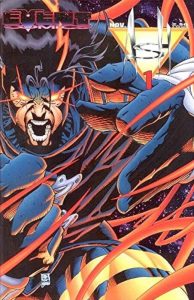
They have it backwards. The film companies steal from us, we’re not supposed to steal from them. They do their own thing. When I write Harley or Jonah Hex, I write them true to who the character is. I realize who the audience is.
With the movies, trying to make everyone happy, it gets watered down a little bit, or they change it. Because you have a guy who never read the comics, going like: ‘oh no, let’s not do that. Let’s change it’. And then the comic people are disappointed. So, I think the separation should be made.
- It’s turning around. They have consultants from the comics. Kelly Sue DeConnick consulted for The Marvels, Charles Soule is consulting for Star Wars. Hopefully they can turn it around.
I hope so. I hope that instead of giving us a thank you and making a billion dollars, it would be nice to get a check. But that doesn’t really happen much.
- One thing I’ve also noticed in comics, there’s now this tendency to have a good penciller being coloured by a colourist without any inks. Do you think the art of inking is disappearing?
Yes. I think with technology, sort of like photo retouching and AI doing stuff, it’s a dying artform. There are still some people who are very good. For example, Klaus Janson. If you look at the pencils, then Klaus inks it, it’s something beautiful. I think we’re losing some of that, but some of that comes from the companies not wanting to pay the inkers. They want the artists to do it, so they give them a little bit more money, but not what the inkers used to get. I think it’s them being cheap and phasing out that part of the creative process.
Look, maybe one day soon, AI will just colour the books. We don’t know. Everything is changing so quick. I think certain pencilers need good inkers and suffer without them. Frank Miller always looks better with Klaus Janson. Al Williamson made John Romita Jr. look the best. He never looked that good since. That was the best combination. So, it comes down to individual taste as well. I inked a lot in the business, I knew what I was doing. I helped. When I inked Steve Dillon, it looked different. When I inked Joe, it looked different from what Joe looks like now. The right inker can really bring something to the table. But I do think it’s an artform that, because companies are getting cheaper, they’re trying to pay less people money. And art always suffers when people cut corners.
- What is your approach when you ink somebody new?
I do my own books with crowdfunding, Kickstarter and stuff. When I work with people, I work with people I like. As far as art styles, when I ink Amanda, I know what she wants, because she’s right here. I get an opinion right away. I do a lot less inking these days, more writing. But I think the fans know when something works. They look at it and go ‘yeah!’. Frank Miller with Klaus Janson on Daredevil… beautiful. Al Williamson on anybody… beautiful. You just see it. You know when you see the originals, it’s brilliant. It’s an instinctual thing.
- So, what’s your secret working with your wife? How do you do it, how do you keep the creativity flowing?
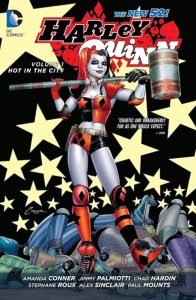
I love her like crazy. We try to challenge each other. So, when we wrote Harley Quinn together, we always tried to make each other laugh by how crazy we could get in the book. We do argue, but it’s usually because we want to do something better. We want it to be better.
And we have a nice size house. Her studio is upstairs and mine is downstairs. And then we meet for lunch. So, we’re in different places. Because I listen to music when I work and she has the tv on. I can’t work with tv, she can. When I work, I listen to classical music, I write to classical music. The key is to understand each other’s place and appreciate each other too. She is so talented, sometimes I don’t say something, because if I say something, she comes up with something better.
I learned to be patient and let her do what she does best. We learned to trust the strength of the other person. She’s very patient and she does a lot of research. Where I’m very quick and spontaneous. But she likes when I’m spontaneous and I like that she’s patient. Over time, we learned on the page. I know she’s going to draw something which connects with the audience. So I write it as best I can and then she makes it better.
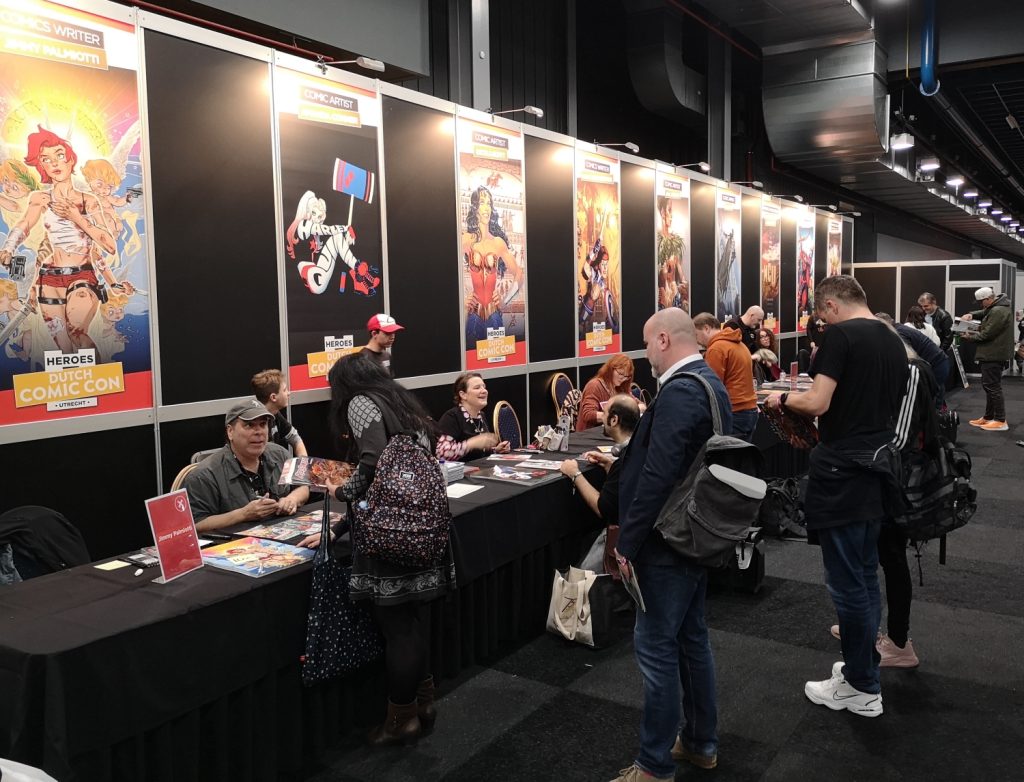
- Can you tell something about the process making The Pro? It’s one of the most abnormal things I have in my collection. How did that happen?
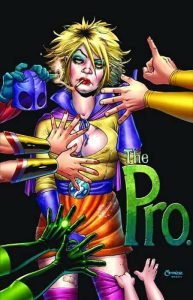
Me, Amanda, Garth Ennis and John McCrea were guests at the Essen Comic Con around 1997, 1998. We all went to a bar called Fritzpatricks at night and we drank a lot. And Amanda said: ‘How come no one ever made a superhero who was a hooker?’ And Garth was like: ‘Oh, if you did that, she would do this and that’. And we all sat there and talked about it. It was sort of like the beginning of The Boys for Garth. While we talked and were laughing about what a superhero hooker could do, Amanda started drawing on a napkin what she would look like. And that’s The Pro. She drew it like that while we were in the bar, drunk.
And the next day, we were all laughing about it and imagining we did it. I said: ‘If you want to write it and we can do the art, I’ll sell it to someone’. And maybe six months later we finished the book, but we had no publisher. So I brought it to DC Comics, to Vertigo. I asked if they wanted to publish it. They looked at it and looked at me and went like ‘No’. Then I went to Top Shelf Publishing. And he (Chris Staros – red.) looked at it and said: ‘it’s fun, but I don’t like the name The Pro’. He wanted to take it if we changed the name of the book. I said we liked The Pro, it makes sense for who she is. So they didn’t want it.
I went to a few more publishers, nobody wanted it. And then I was in San Diego where I met with Erik (Larsen – red.) at Image Comics. I said: ‘Here’s this book I have, nobody wants it’. He looked at it, he’s laughing. He goes: ‘We want this!’. That’s how we got it published. But nobody wanted it for a while. It was too much, to adult, they would get in trouble for it. And Image was the only publisher who got it. Erik loved it. And it’s in its ninth printing. It still sells.
- I’m a bit surprised about Top Shelf. They published Lost Girls, written by Alan Moore and drawn by Melinda Gebbie. Which is basically crayon erotica.
They just wanted to change the name, which we didn’t. I love Top Shelf, Chris Staros is a great guy. It just wasn’t right for them and probably in the long run, Image was where it needed to be. They all loved it. They also said to me: ‘If a guy drew it, we might get in trouble. But because Amanda did it, it’s actually, because it’s so rude, it’s also charming’. You really feel for this person, Amanda drew it in a way you liked it. If a guy drew it, it would be a tough book to sell.
- Do you think comics can get away with stories like that, because it’s comics? Because we’re a bit under the radar?
I think so. But our secret weapon on The Pro was Amanda. Even Garth says, nobody else could draw it. Even though it was under the radar, we did get in trouble for it. DC Comics called, I had to go up to their president Paul Levitz, because they wanted to fire me and Amanda from everything and never use us again. And Karen (Berger – red.) from Vertigo and Dan Didio stuck up for us.
I said: ‘Mad Magazine is picking on your hero’s all the time!’. And Paul said: ‘But they’re not showing them having sex!’. I had to promise there wasn’t going to be a part two. But the joke is, there is going to be a part two. Amanda and I are working on a sequel that takes place twenty something years later.
- Is making The Pro easier now, because of The Boys being on television and everything becoming edgier and more brutal?
The Pro was the testing ground for Garth doing The Boys. Because it’s very much like The Boys if you read it. So when The Pro was good, he came out and did The Boys with Darick Robertson. And that was for DC Comics. But they didn’t want it anymore, so Dynamite picked it up. The rest is history. It’s a monster of a success. DC blew it on that one.

- It happens. Just like Harry Potter. No one wanted J.K. Rowlings story at first too.
Or Forrest Gump. Every studio passed on it, until it got made and was a huge movie. It does happen. The right story at the right publisher, sometimes it’s everything.
- You’ve done a lot of different characters, a lot of stories. Is there still something you haven’t worked on you see as a dream project?
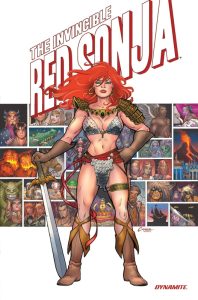
At one point, Dynamite asked me to adapt some of the Ian Fleming books. I read them like forty times when I was a kid. I turned it down, because I told them I either do all the books, or none. And they wanted to hire different guys, so I turned it down. I wanted to keep the continuity of the Fleming novels and not have somebody different write it in another style.
For a couple of years, when I wanted to do Conan, I got to do Conan. I wanted to do Red Sonja, so I did Red Sonja. I think I worked on pretty much every character I ever wanted to. Only one series I haven’t written is The Fantastic Four. I do have a collection of the original comics: number one to hundred and twenty five, but I have never gotten to write it. I don’t know if I ever will. So I think The Fantastic Four is it, but I do have a lot of characters I’m creating I want to do. Until someone gives me the FF, I’ll be working on my originals.
- Did you read the new Conan the Barbarian series at Titan Comics with the Rob De La Torre art?
I bought the first two issues and I like them. But the art is very distracting to me, because it looks so much like John Buscema. I do like it, but at the same time I want him to do his own work. I read the first two and in my pull box I have the other ones.
Amanda and I have been talking about doing some Conan. So we might, in the future, have some Conan stuff coming.
- A crossover with Red Sonja, or is that separate?
It’s separate, I would probably do a story with Belit, with the pirates. I’m also working on Gunslinger Spawn, which isn’t out for another six months. It’s this monthly book I’m writing for Todd (McFarlane – red.) and Patrick Reynolds is the artist. I’m sure the title they picked is Tales of the Gunslinger, but I’m writing the character when he first turned into the Gunslinger in the 1800’s. I’m writing the Gunslinger in the past, like Jonah Hex, while Todd writes him in the modern day. I’ve been working on that, I’m six issues in at the moment.
- Why is Western still so popular? You see it in the new Star Wars stories, like The Mandalorian.
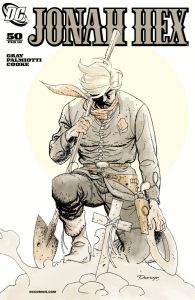
I think, for me, there is less grey lines. Our world now is grey: no good and bad, it’s all over the place. Westerns show you who the bad guys are and who the good guys are. It’s a genre which is relaxing to watch, because you know that. And it’s always interesting to see the plight of somebody. Those themes are classic, like revenge. The genre is cool, just when you think it’s over, you have someone like Tarantino coming over and do a Western. And you go: ‘that’s very good’. The Coen brothers remade True Grit and you think it’s almost better than the original.
I think people love the genre, they love that it is simple. It’s about when people were hunters, discovering new worlds. The Western was very big in Europe when I was younger, there were new frontiers, new places. I don’t think the genre is ever going away, it gets rediscovered every once in a while. Superheroes do have a bit of fatigue right now, Westerns have a fatigue. And then someone does something original with it and it’s exciting again. I think we’re at a low ebb right now. The last three or four superhero movies I’m like, meh. I’d rather see something like Interstellar instead of the new Ant-Man. Every genre needs a time to be rediscovered.
- How are you approaching Gunslinger Spawn compared to your Jonah Hex series?
Jonah Hex familiarized me with the time period. I did so much research. How people spoke, I read letters from people, I learned the history and went to a ranch to learn how to ride. So, with Gunslinger, I had to research Spawn history. What Todd has written about the Gunslinger; I read everything. I looked at it and decided to write it as if you’ve never read Spawn or Gunslinger. The first issue is big, it’s a double issue which I wrote for everybody who never read the series.
I told Todd I needed to write it from the ground up. I need to build the foundation. If people read it for the first time, I can’t have them come in when it’s the middle of the story. I have to show him before he becomes the Gunslinger and why that is. There’s this mystery when the series goes on. The difference is, I wrote Jonah Hex as done-in-one stories. Gunslinger Spawn is sequential. I’m still tapping a story in one or two issues and then it moves on. The big picture is a different pace then Todd’s books. He said to me: ‘I trust you to do what you do. Go crazy’. That’s the best thing anyone can tell me. It’s beautiful. Patrick Reynolds is on Twitter. He posts some of the pages. It’s different, more realistic. Photorealistic.
- Did you change your writing style for him? You worked with pencillers all your life, do you know how to write for them?
I write different for every penciller. I see their strengths and weaknesses and I talk to them about what they like to do. With Patrick, he was up for the challenge. He stepped up. I told him which films I like, which art I like and what we’re trying to do with the book. He understands my influences, I don’t have to worry about him. He did five pages and I was like: ‘yeah, that’s our guy!’.
I told Todd and the editor he’s perfect. It doesn’t look like Greg Capullo or the crazy stuff. It’s grounded in reality. For me, to get you to believe that this guy got taken over and became this character, I have to ground it in reality first. It’s a different tone. We’ll see how it does. If I get fired, we’ll know why.
- I love Spawn, I love the timer which shows when his power runs out and he will be at the mercy of the devil.
In Gunslinger, he’s a guy that gets handed something. He gets reluctantly involved in the world of Spawn. It takes over his body, but he doesn’t know why. His life is about finding out what’s happening to him. When he gets taken over by the Spawn, the powers make him see there’s something wrong at the edges of the world. He never noticed that when he was a regular person. He goes to a circus and sees there’s something really messed up there. It’s like, if something is in your peripheral vision all the time and you turn and it isn’t there. That’s the world for him all the time. It becomes creepier and creepier as it starts exposing itself to him. That’s what the series is about.
- Thank you so much for the great talk.
All right buddy. Thank you!
Follow Jimmy’s projects and buy his work on Paperfilms, the joint website with his wife Amanda Conner. You can also find Jimmy on Twitter: Twitter.com/jpalmiotti.
Source: https://www.modernmyths.nl/jimmy-palmiotti-interview/
Want to read more interviews like the Jimmy Palmiotti interview? Go to the Modern Myths Interviews section!




